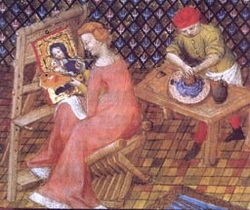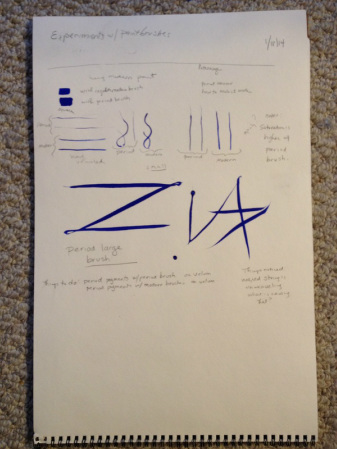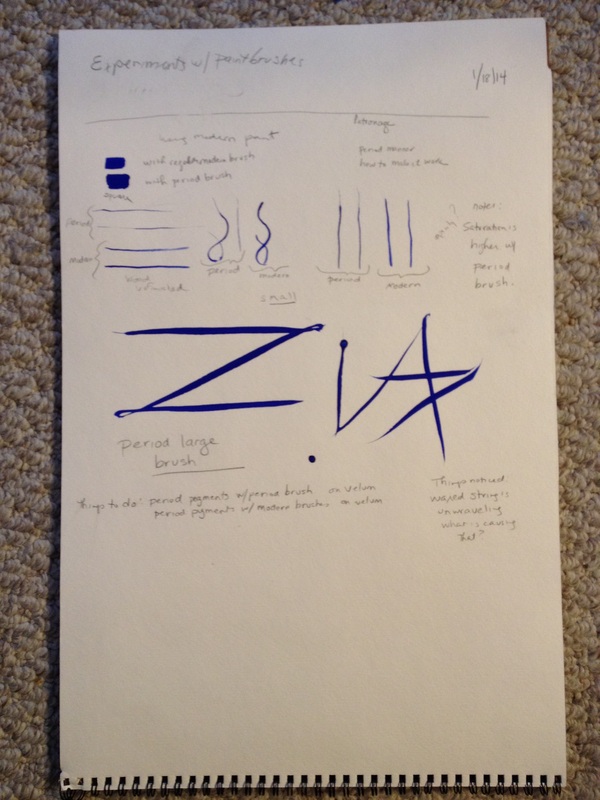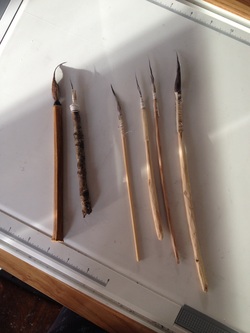
So since I have had this experience, I thought putting down the information for others might be helpful. So here is my list. There is the qualifier that everyone's list will be different and you really do have to figure out what works for YOU.
Supplies:
- Ames Lettering guide - this will help with the ruling for calligraphy
- T square
- Straight edge - two kinds, one should be a cork backed metal ruler, the other should be a plastic see through.
- Pencils – some prefer mechanical pencils, some prefer #2 pencils, drawing pencils. I like mechanical pencils and that is what I use, but again, use what works for you.
- Black Ink – recommendation Higgins Eternal, although I am trying out a bunch of different ones
- 3 good brushes in different sizes. I prefer 00, 02, 03, natural hair preferred.
- 3 older brushes for mixing (the best are often labeled "one stroke")
- White plastic eraser
- Crow quill pen
- Dip Pen handles for variety of nibs and variety of nibs (2-3). I have had very good luck with Mitchell nibs.
- In place of dip pen, the best calligraphy pen you can buy. I suggest Rotring Art Pen.
- Color wheel
- Eye droppers (2)
- Windsor Newton or Holbein gouache watercolors – at least the primary and secondary colors. If you are just starting out buy Ultramarine, Cadmium red purple, ivory black, permanent white, burnt umber, permanent green.
- Paint tray
- Small glass jars for water for adding to paint and for rinsing brushes
- Papertowels, or rags
- Toothbrush to clean paint trays
- Blue painters tape
- Sandpaper
- Scissors
- Chinese fan brush to use in brushing off eraser leavings
- X-acto knife
- Drawing pads
- Scrap paper
- Gold leaf (once you begin gold leaf)
- dog tooth burnisher
- glassine
- tweezers
- miniatum or miniatum ink
Paper – the best that you can afford – sheets of Hot press are smoother, sheets of cold press are rougher surface. At least 140 lb (such as Strathmore 400 series – which is student grade). Your best bet is Pergamenta. You should try out different papers to see which one you like best.
For drawing – conte crayons, pencils, chalk, charcoal
And where do you get all these things?
Online: Paper Ink and Arts http://www.paperinkarts.com
Scribblers www.scribblers.co.uk
John Neal Books http://www.johnnealbooks.com
Jerry’s Artarama http://www.jerrysartarama.com
Dick Blick http://www.dickblick.com
I also shop at Utrecht art stores in person because sometimes you want to touch and see what you are buying.
Ask questions if something isn't clear and I can help direct you to the right place. Happy arting.



 RSS Feed
RSS Feed
